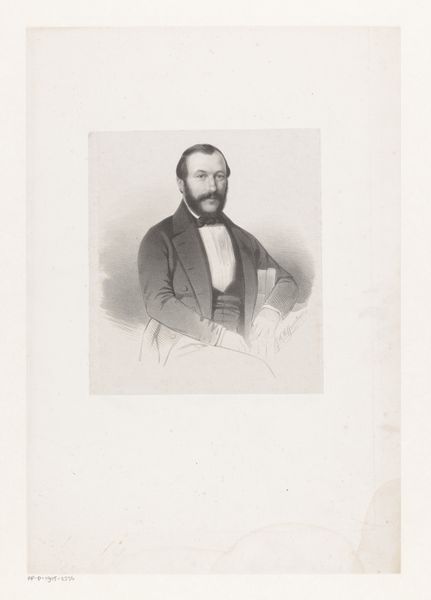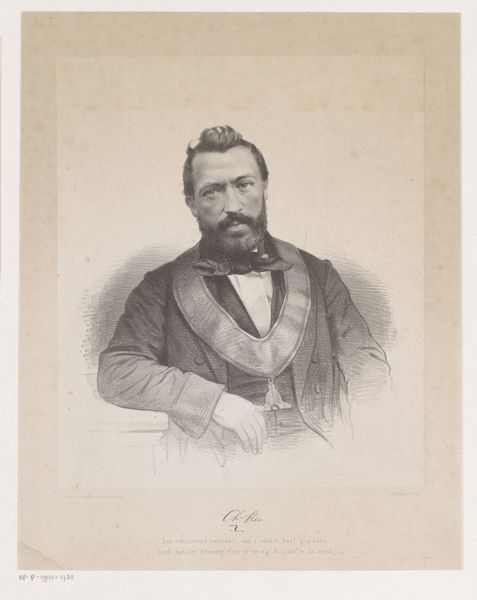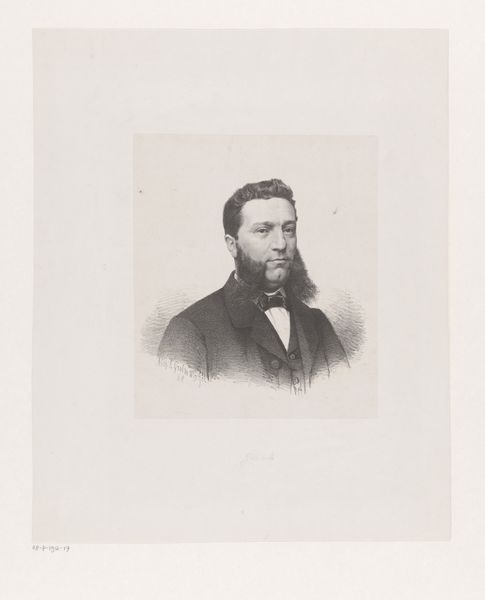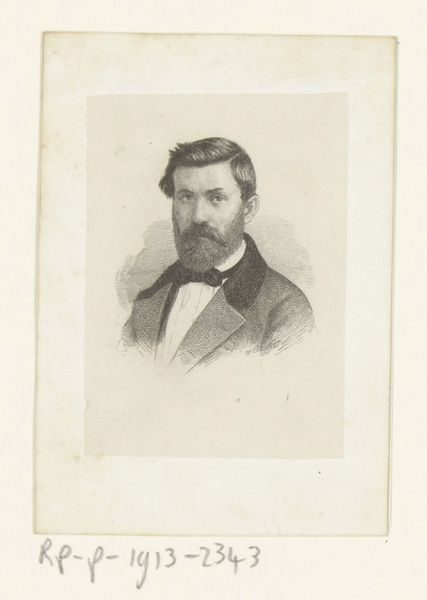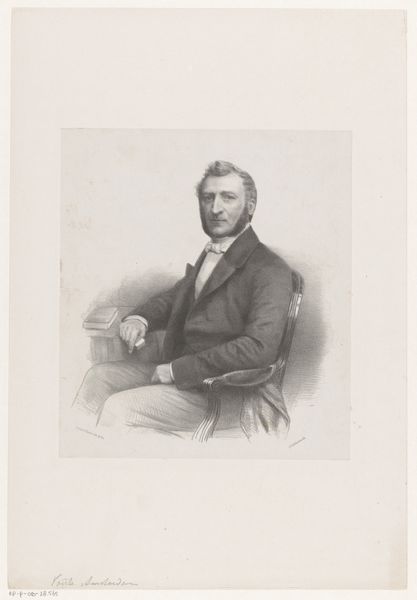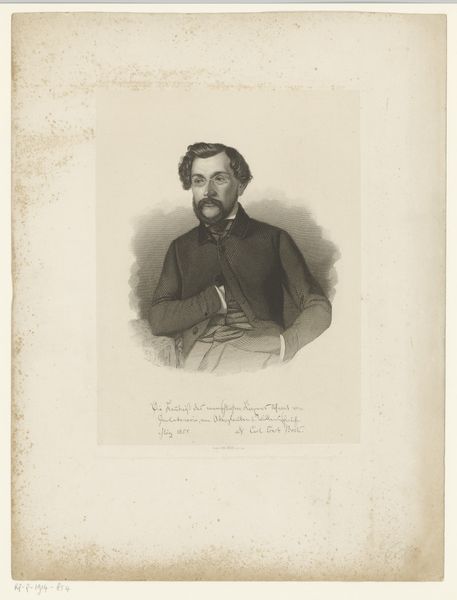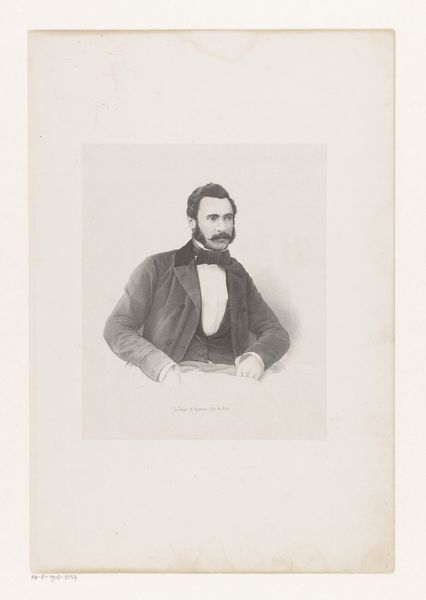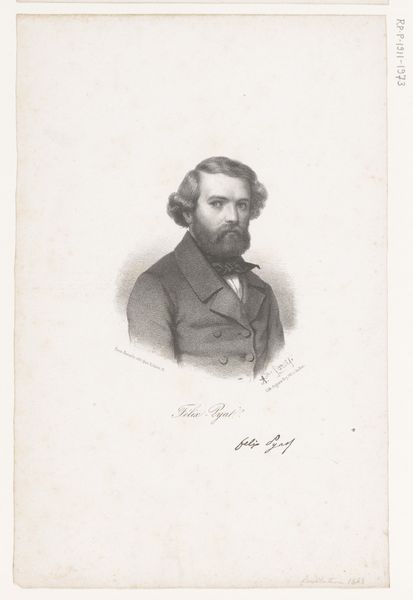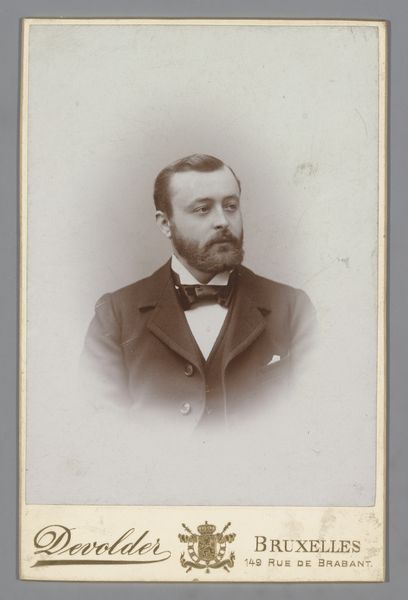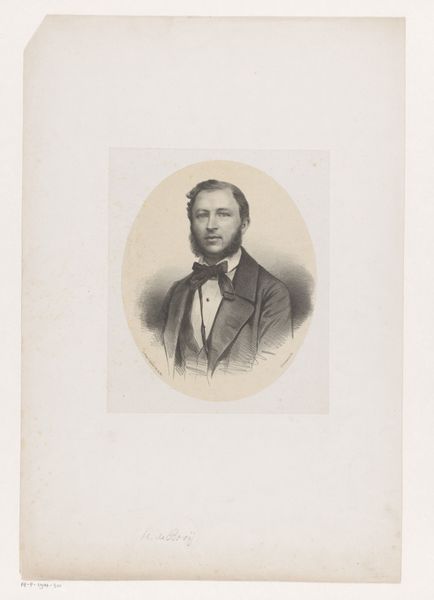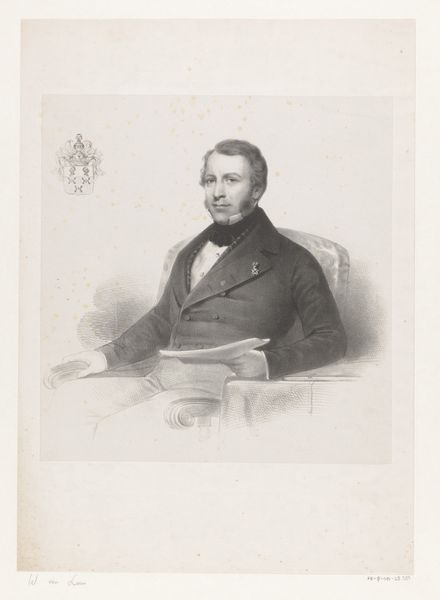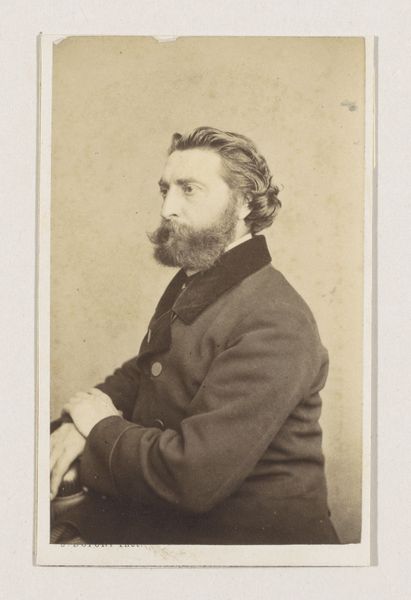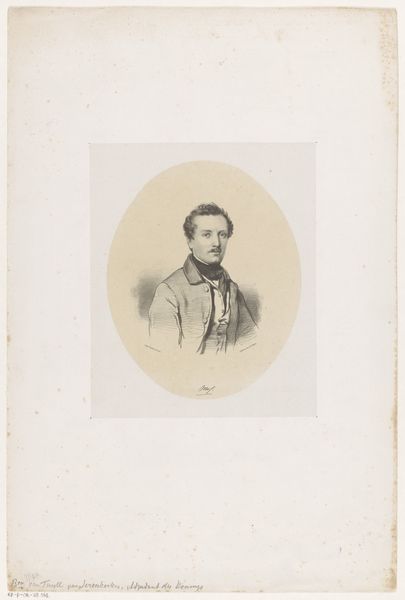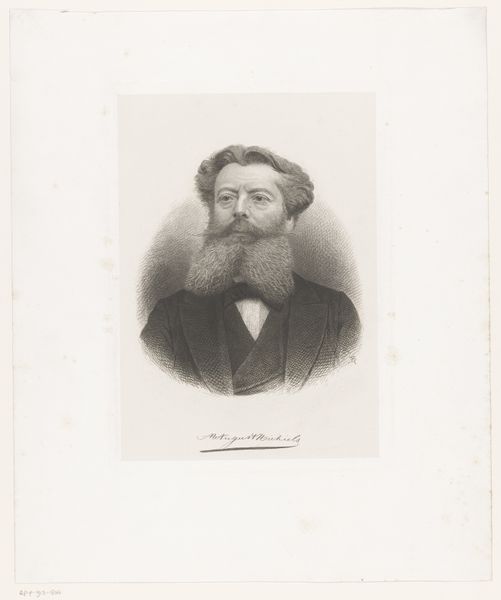
drawing, print, engraving
#
portrait
#
drawing
# print
#
engraving
#
realism
Dimensions: height 430 mm, width 302 mm
Copyright: Rijks Museum: Open Domain
Editor: Here we have "Portrait of George Hendrik Wachter," made around 1883 by Johan Hendrik Hoffmeister. It’s a drawing, a print really, an engraving. It feels rather formal, almost like a photograph but more...intense. What catches your eye about it? Curator: Immediately, it's the hand tucked into the coat. This gesture, historically, signals a kind of internal restraint, perhaps even melancholy. Consider who used this pose: Napoleon, for instance. What emotions did they aim to convey? What psychological space do they want to occupy? Editor: So, you think it's about controlled emotion? It’s not just a casual pose? Curator: Indeed. Look at his gaze; direct, but…questioning? There’s a tension between the subject's external presentation – the suit, the neatly trimmed beard – and a certain vulnerability suggested by that furrowed brow and that gesture of the hand, reminiscent of a hidden or wounded heart. Hoffmeister captured something beyond mere likeness. Editor: That’s interesting, I hadn’t really thought about the hand that way. It seemed almost… natural. Curator: The ‘natural’ itself becomes a symbol, doesn’t it? Think about it. What does it mean when someone consciously chooses a certain pose? What echoes of past power, past sadness, linger in that simple act? The symbols accrete meanings over time. It's not merely about realism; it’s about a cultural memory inscribed onto an image. Editor: I see what you mean. It's like the portrait's speaking a silent language. Thank you, that gave me a lot to think about! Curator: And for me as well, to consider anew the enduring power of visual symbolism.
Comments
No comments
Be the first to comment and join the conversation on the ultimate creative platform.
